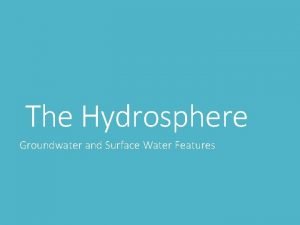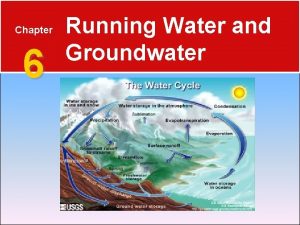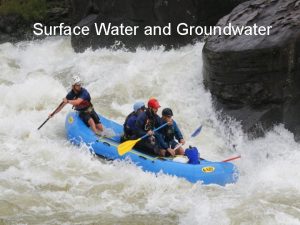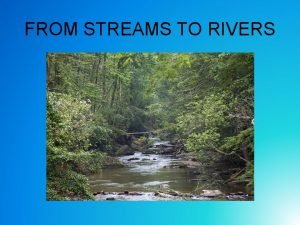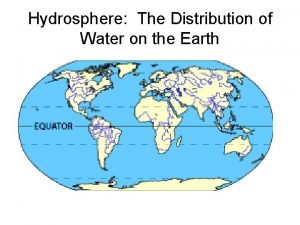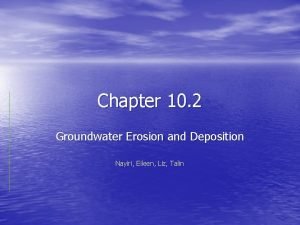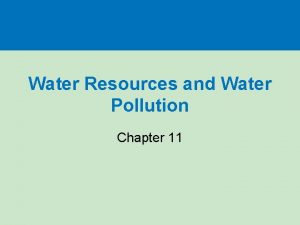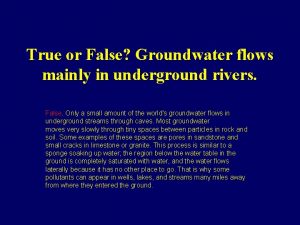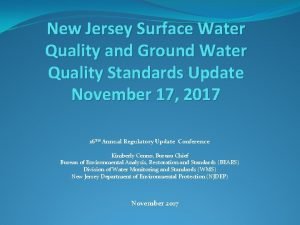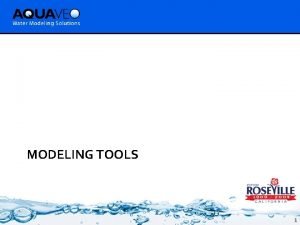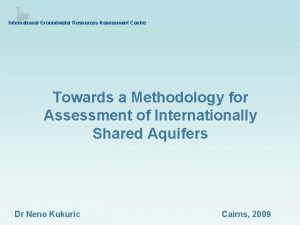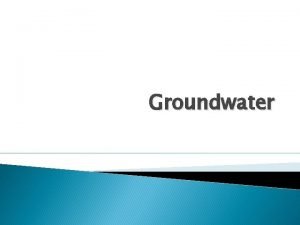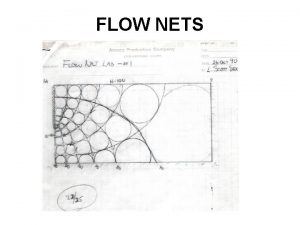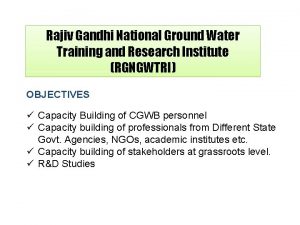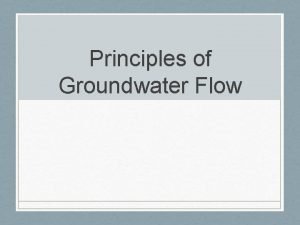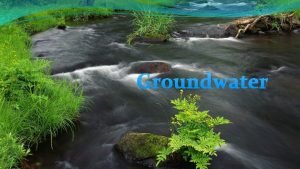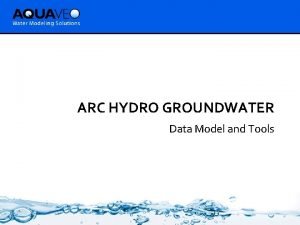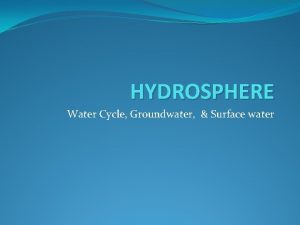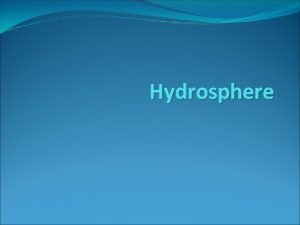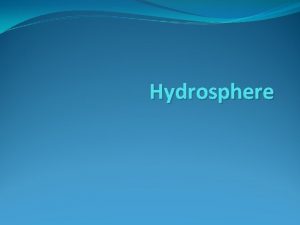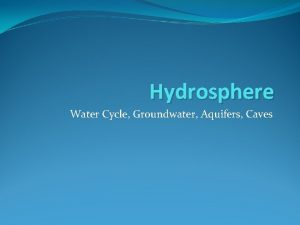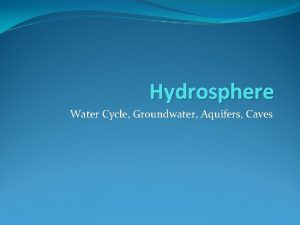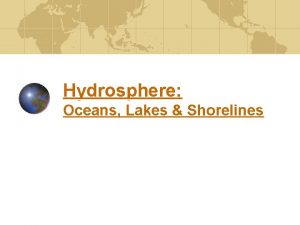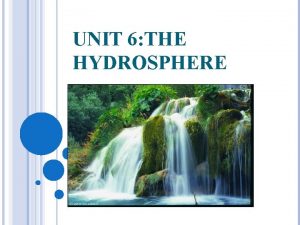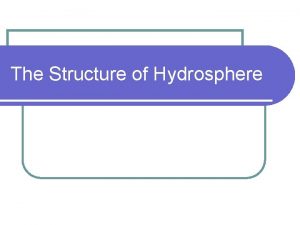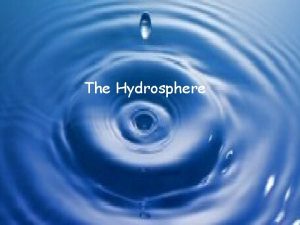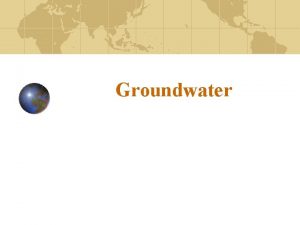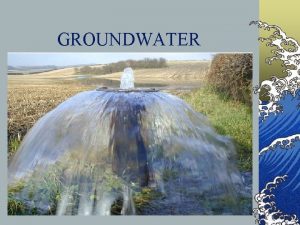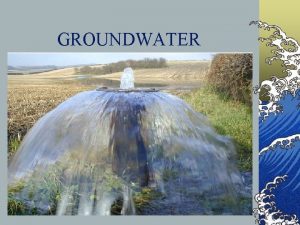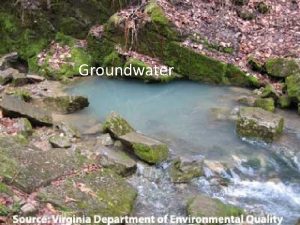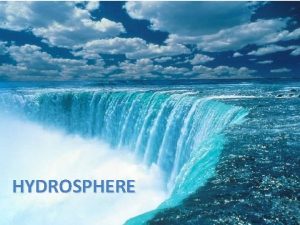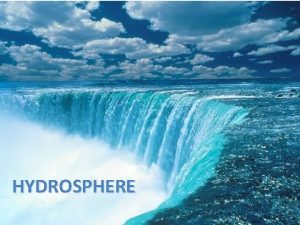Chapter 10 Groundwater Hydrosphere Hydrosphere water on and





















- Slides: 21

Chapter 10: Groundwater


Hydrosphere • Hydrosphere – water on and in Earth’s crust • 97% in oceans • 90% of fresh is frozen


Precipitation & Groundwater • Seawater becomes water vapor & clouds • Infiltration – precipitation becomes groundwater • Porosity - % of pore space (open holes in something)

Zone of Saturation • Zone of saturation – depth where groundwater fill ALL pores • Water table - upper boundary of zone of saturation ▫ Fluctuates with location & weather condition • Zone of aeration – above water table, mostly air


Groundwater Movement • Permeability – ability of a material to let water pass through it • Aquifer – where groundwater flows • Aquicludes – Impermeable layer

Groundwater Erosion & Deposition • Slightly acidic – carbonic acid ▫ Ca. CO 3 (calcium carbonate) major component of limestone dissolves in any acid ▫ Role in formation of limestone caves

Dissolution of Groundwater • Cave – natural underground opening with connection to Earth’s surface ▫ Form when groundwater dissolves limestone • Karst topography – surface feature produced when limestone is dissolved ▫ Sinkhole – depression in the ground from collapsed cave ▫ Sinking streams


Groundwater Deposits • Tap water may have Sulfur & Iron • Hard water – contains calcium, magnesium, and iron • Soft water – water with few dissolved ions

• Dripstone formations – water drips in caves depositing tiny amounts of Calcium Carbonate ▫ Stalactites – cone-shaped structures hanging from cave’s ceiling ▫ Stalagmites – mound-shaped deposits forming on floor of caves ▫ Dripstone columns ▫ Travertine – limestone that makes dripstone formations


Springs • Springs – natural discharges of groundwater • Temperature of water usually the average annual temperature • Hot springs – water temperatures higher than human body • Geysers – explosive hot springs that erupt at regular intervals

Wells • Wells – holes in ground that reach a reservoir of groundwater ▫ Tap into aquifers ▫ Over pumping lowers the water table • Drawdown – difference between original water table level & level in pumped well • Recharge – water from precipitation & runoff is added back to well

Confined Aquifers • Confined aquifer – found between 2 aquicludes ▫ Not easily polluted • Artesian well – well drilled in confined aquifer, water spurts above surface • Artesian spring – spring that discharges pressurized water

Threats to our Water Supply • Freshwater is Earth’s most valuable resource • Overuse occurs when the use rate is greater than the recharge rate • Subsidence – sinking of land because of withdrawal of groundwater

Groundwater Pollution Sources • Sewage, industrial wastes, landfills, agricultural chemicals • Chemical contaminants are extremely difficult to separate from groundwater • Near seas, groundwater is polluted by salt


Protecting our Water Supply • Identify & eliminate pollution sources • Chemical treatment of water at surface
 Hydrosphere
Hydrosphere Water and water and water water
Water and water and water water Chapter 6 running water and groundwater
Chapter 6 running water and groundwater Running water and groundwater
Running water and groundwater Water erosion and deposition
Water erosion and deposition How does groundwater rejoin the water cycle
How does groundwater rejoin the water cycle Water covers earth surface
Water covers earth surface Groundwater erosion and deposition
Groundwater erosion and deposition The zone of aeration
The zone of aeration How to help reduce water pollution
How to help reduce water pollution Groundwater true/false quiz answers
Groundwater true/false quiz answers Njdep surface water quality standards
Njdep surface water quality standards Gms groundwater
Gms groundwater Groundwater assessment methodology
Groundwater assessment methodology Water table
Water table Septic tank contamination groundwater
Septic tank contamination groundwater Groundwater flow net
Groundwater flow net Brain pop water cycle
Brain pop water cycle Rajiv gandhi groundwater raipur
Rajiv gandhi groundwater raipur Total hydraulic head
Total hydraulic head Permeability in rocks
Permeability in rocks Arc hydro groundwater
Arc hydro groundwater
